How to Choose A Pickleball Paddle? The Ultimate Buying Guide
The popularity of pickleball is increasing day by day, and more and more people are buying pickleball paddles. Many players coming from tennis and ping pong are confused about what type of paddle they should use.
On the other hand, some players already playing this game are not satisfied with their purchase and want to know everything about choosing the right pickleball paddle.
If you don’t know how to choose a pickleball paddle for yourself, this ultimate buying guide is for you.
We included all the major and minor points to give you full freedom and understanding of all the factors, so you can get a perfect paddle.
Table of Contents
- Paddle Face Material
- Pickleball Paddle Core
- Weight of Pickleball Paddle
- Grip and Handle of the Paddle
- Tennis Elbow or Other Health Conditions
- Shape of Pickleball Paddle
- Personal Preferences
- Noise
- Player Experience
- Design and Color
- Price
- USAPA Approval
- FAQs
- The Bottom Line
Paddle Face Material
When it comes to buying a pickleball paddle, we consider many factors. However, the key point to consider is the material your paddle is made of.
There are three common materials used in pickleball paddles, and they all have their advantages and disadvantages. We are here to help you pick the material which suits your needs and style the most.
1. Wooden Pickleball Paddles
The wooden paddles are considered classics as they are the original paddles. They are a good choice for beginners and players who are just starting. As these paddles are not very expensive, you can get these if you don’t want to spend more money.
We would recommend these paddles to those who are buying bulk for groups or schools. If you live in humid conditions and get very sweaty while playing, wooden paddles can be a wise choice.
However, people who are serious about their game and don’t want heavy paddles should go for other options. You get more drive power with them and can handle strong strokes, yet these paddles offer no control. They are not USAPA approved, so they can’t be used in tournaments.
In short, wooden paddles are inexpensive and durable, but we recommend you to go for other better options.
2. Graphite Pickleball Paddles
Graphite is another material for paddles that comes with aluminum, Nomex (rigid nylon), or polymer core with graphite faces on both sides. These paddles are very expensive among all other paddles. They are incredibly lightweight paddles, weighing between 6 – 9 ounces.
A very thin layer of graphite makes them strong and allows the player to have great shots. These lightweight paddles are easy to control and maneuver; that is why professionals and serious players prefer them.
Despite all these qualities, they are pricey and so outside the reach of many people.
3. Composite Pickleball Paddles
The composite pickleball paddles are becoming very famous due to their price variation and moderate weight. They are not as heavy as wooden paddles, nor light like graphite, but have a balanced weight.
Composite paddles come with all types of cores: aluminum, polymer, and Nomex. They usually have surfaces made of fiberglass.
The unique quality of these paddles is their textured surface that allows you to spin the ball and confuse your opponent.
Composite paddles are available in various sizes, shapes, and weights. These cost-friendly paddles are an excellent choice for power players. The hard surface allows them to have more power than control.
You can learn more about the best material of pickleball paddles here.
Pickleball Paddle Core
With modern technology where we get variety in materials, the core of paddles also has advanced in their techniques.
Different materials in paddles are bringing incredible variations in core construction. Therefore, while choosing your ideal paddle, you need to know which core is best suited for you.
There are three types of core construction that not only provide unique characteristics but determine the price also.
1. Polymer Core Paddles
Polymer core is the newest technology and modern technique in the market. It is a blend of plastic and is rising high in popularity. These cores are the most quitter among the three cores, making them ideal for those living in noise restriction or green-zone communities.
The soft polymer core absorbs the sound and vibration and gives great control to the players. If you can use force and swing the paddle hard enough to produce power, these are perfect paddles for precise and controlled hits.
If you want more power than control, then you should not choose these paddles.
2. Aluminum Core Paddles
Aluminum core paddles are recently introduced in the market and are getting praise due to their lightweight.
Their aluminum honeycomb structure makes them stronger yet gives a softer feel and a very light touch. Many players who have tennis elbow or wrist issues prefer to use this.
If you want control, aluminum is an excellent option for you. Though you will not get much power to drive the ball with these paddles, it is a matter of personal choice.
Aluminum paddles are not as loud as Nomex or not as quite as polymer. So you will hear a good popping sound with them.
3. Nomex Core Paddles
Nomex is the oldest and heaviest core among the three. It is made of aramid fiber paper (cardboard-like) dipped in resin to make it strong and durable. Paddles using Nomex core are also cheaper than other paddles.
Nomex is a loud and hard paddle, but quieter than wood. It gives a very prominent popping sound when the ball connects the paddle. Therefore, if the sound is not an issue and you are in good physical condition to handle a little weight, it’s for you.
This core is for those who like to have more power and can handle the weight. Numerous players like to use Nomex core paddles. Especially single players prefer it to get strong shots and fast game.
Weight of Pickleball Paddle
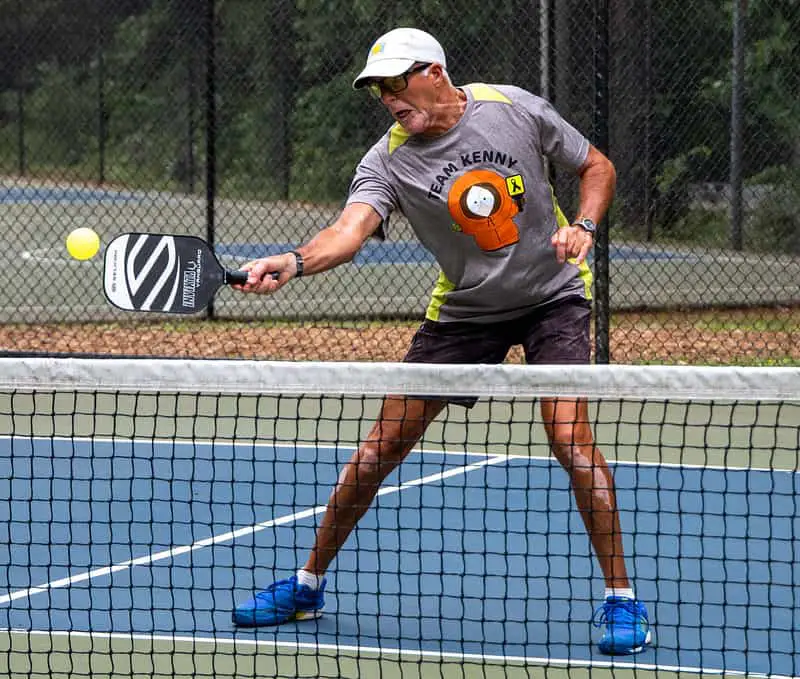
Weight is a crucial factor in your buying decision. To decide the right weight for yourself, you need to see your muscle strength and health conditions. If you suffer from any injury or have other medical issues, you need to consider the weight before choosing a paddle.
It may seem that a few ounces are no big deal, and you can handle it. However, swinging a paddle for a long time is going to tire you out. The weight of the pickleball paddle ranges from 6 oz to 16 oz, but is usually within the 7-9 oz.
You can find three categories in the weight of a paddle.
1. Lightweight Pickleball Paddles
Any paddle that weighs under 7.3 oz is considered a lightweight paddle. These paddles provide great maneuverability and quick response time to the player.
It allows more control over the ball, and you can hit drop shots. Many ping pong players like to use them for their weight and ease of mobility. If you have quick reflexes and wrist movement and spin are what you like, lightweight paddles are for you.
However, you have to compromise on power and hit the ball harder with body power. This can cause extra strain on your arms. With a lightweight paddle, you can’t get a lot of hard hits and long shorts. They are not good at absorbing vibration,
2. Mid-Weight Pickleball Paddles
Mid-weight paddles are ideal for beginners and intermediate players and those who want a balance in power and control. They weigh between 7.4 oz to 8.2 oz.
If you are suffering from any wrist, elbow, or shoulder injury, mid-weight paddles are good for you. Even when you are unsure, go for mid-weight paddles.
3. Heavy Pickleball Paddles
For the players who prefer power to control, heavyweight paddles are the best choice. Paddles that weigh more than 8.2 oz are considered heavyweight.
They provide the power to hit the ball harder and deeper without much effort. These paddles are preferred by expert and professional players who like to play aggressive and vigorous games.
Many tennis transitional players prefer them, as most tennis racquets are heavier than paddles. However, you lose control and speed with heavy paddles, as maneuvering heavy paddles slow you down a bit. It is also tiring to have long matches with heavy paddles.
These paddles are not a good fit for players with injuries and health issues. However, if you need a paddle that can absorb shock, heavy paddles are your best option.
If you want to read more, you can read our article on the ideal weight of the pickleball paddle.
Grip and Handle of the Paddle
After weight, the grip is another critical consideration when choosing a pickleball paddle. Good grip size is essential for a good game.
With size, you need to consider the grip/handle length and the comfort of the grip. The best practice for choosing a perfect grip for yourself is to hold it in your hand and feel it. Check various paddles with different grips, and only then can you tell if it’s perfect for you or not.
Grip Size (Thickness)
Grip thickness will prevent the paddle from slipping and causing any tennis elbow or wrist injury. Most paddles come with grips that are 4 inches to 4 ¾ inches in circumference.
Choosing the correct grip size allows you to control the ball and the freedom to hit the target.
Smaller grips are always better for small hands, allowing wrist movement to spin the ball and better hitting opportunities. This is also an ideal size for power serves.
Moreover, you can always add tape and over-grip to make it an appropriate size if you think it is too small for your hand.
Similarly, a large grip size has its benefit as it allows more control and stability. It also reduces the stress on the elbow and wrist. The main concern should be choosing the right fit for your hands. If not, it can cause injury.
There are a few tips you can use to get perfect size grip:
Player’s Height
Your height can determine what grip size you should choose.
| Player Height | Grip Size |
| Under 5’3″ | 4″ circumference |
| 5’4″-5’8″ | 4 1/8″ to 4 ¼” circumference |
| 5’8″ and above | 4 ½” circumference and above |
Finger Size
Another way to determine the grip size is by measuring the finger size. Measure your ring finger from the tip to the middle crease /line of your hand. There are three prominent lines in your palm. The measurement you will get is a perfect grip size for your hand.
Grip
When you wrap your hand around the handle, there should be enough space for your other hand’s index finger to snuggle in. It indicates that you have a perfect grip size. However, for online purchasing, you can use other methods.
Handle Length
Players uniquely hold their paddles and swing them differently, which makes handle length a subjective choice. Pickleball paddles have 4-6 inches average length, depending on the shape of the paddle.
There are paddles with short handle ranges between 4 and 4 ¾ inches. These paddles are best for the players who prefer long face paddles. They put their thumb or index finger on the paddle face to provide better support and power. Many table tennis transitional players also prefer short handles.
Most players prefer to use a standard or medium length that ranges from 4 ¾ to 5 ½ inches. It is equally an ideal grip length for beginners and professional players.
Many tennis players prefer longer grips. If you’re a tennis player, you can check out our list of pickleball paddles for tennis players. Also, those who hold the paddle in both hands to get hard and strong hits use a more extended grip handle, but these long handles make the paddle’s face shorter. These lengths range from 5 ½ to 6 inches and provide extra reach to players who don’t want elongated paddles.
Grip Comfort, Technology, and Style
The size and length of the handle are not the only factors that matter. The technology and material used in the grip are also essential.
- It should provide comfort and cushion to the hand for the player to have long matches.
- Sweat absorbing material should be used for a non-slippery grip.
- The high-quality grip uses a shock and vibration-absorbing material to give extra comfort to the hand and stop the shock ripples from reaching your elbow.
- The ridges on the surface of the handle provide a strong grip and offer better control and strong strokes.
In case your grip is worn out, always use a premium grip to replace it.
Tennis Elbow or Other Health Conditions

‘Tennis Elbow’ or ‘pickleball elbow’ as players call it, is a condition where continuous use of the arm and mainly elbow muscles causes pain in the lateral side of the elbow. The primary cause of this is repetitive motion.
Wrists also get injured commonly while playing the pickleball game. Another issue is shoulder pain or strain. Again its cause can be old age and rotation cuff that can get damaged after a continuous movement.
Before buying a pickleball paddle, you need to know how you can prevent these injuries:
- Grip size should be perfect in your hands. A too small or too big grip can cause movement issues, which can cause tennis elbow.
- Buy a paddle that can absorb the vibration of hitting the ball on the paddle. That will reduce the impact before reaching the elbow.
- Use the paddle that weighs between low to medium range (7.3 to 8.2 oz). Heavy paddles cause a strain on your elbow or shoulder, and you may feel pain. However, too-light paddles can also cause the issue. You use body mass to hit the ball hard, and that can injure the shoulder or elbow.
- If you’ve medical problems, you should consult your physician.
Shape of Pickleball Paddle
You can find different shapes of paddles in the market. All these paddles can’t exceed 17 inches in length, and the combined length+width should be no more than 24 inches by USAPA rules. Therefore, manufacturers did experiments within this size limitation.
These shapes are designed to give the player more reach, some provide a bigger sweet spot, and some are designed to increase power. While choosing a paddle, knowing which shape matches your requirements and can be your ideal shape is good.
1. Standard Rectangular Paddle
The standard rectangular shape paddles are simple, introductory paddles, considered the very first shape of paddles. It is 16 × 8 inches. A total of 24 inches combined that is approved by Usapa and an ideal size for a pickleball paddle.
Standard Rectangular shape paddles have a generous sweet spot and are a good combination of control and power.
In our opinion, as a beginner, you should always go with this shape. Once you get some experience and know your style, you can choose other shapes also.
2. Round/Oval Paddles
Round shape paddles are pretty common among beginners and professional players, as they have a larger sweet spot for maximum precision. Even if you hit the ball outside the sweet spot, this paddle is forgiving.
These paddles weigh heavier near the handle, which makes them easy for players to handle. This weight distribution is also suitable for players with tennis elbows.
3. Elongated/ Blade Paddles
Elongated paddles are 17 inches long with elongated faces, less width, and small handles. They are also called ‘blades.’ Not many players use elongated paddles, as they have a small sweet spot and make it hard for beginners to hit the right spot.
But elongated paddles make ideal pickleball paddles for singles game, as they increase the reach, helping players cover the court.
However, many professional and more experienced players like to play with these paddles for precision and extra reach. While playing with a blade, you can’t expect forgiveness. You must know where to hit and how to hit the ball. Moreover, they have shorter handles.
4. Oversized Paddles
Oversized paddles are long and wide as compared to other paddles. They have a larger surface area, which equipped them with a more prominent sweet spot. Especially single players like to use them to get extra reach, fewer miss-hits, and more accuracy.
They are a good choice for power players who hit the ball hard. Quick kitchen strokes are effortless with these paddles.
5. Widebody Paddles
Widebody pickleball paddles are similar to standard rectangular shapes. They are a better choice for beginners who like to have more surface area to hit the ball with a more prominent sweet spot.
Widebody paddles mostly have 8 inches wide surface and 15 ¾ inches in length. Widebody paddles are very common, and players like this shape as it allows you to make fewer mistakes.
6. Tear Drop Paddles
Teardrop pickleball paddles are another variation in the shape of the paddle. They have a more rounded shape and equally distributed weight. With more rounded and easily accessible sweet spot allows players to have continuous successful hits.
Teardrop paddles are very touch-friendly and power hitters. You can quickly rotate and move your paddles faster enables you to cut through the air as there are no corners to slow down the mobility.
However, as there are no corners to reach out to, it is hard to hit the ball near your feet.
7. Diamond-Shaped Paddles
There is another pickleball paddle design which is called Diamond shape. With their corners cut, they look like a geometrical shape.
It is a great dinking paddle that helps you hit the ball near the floor, especially in the kitchen area. They have a good combination of power and control.
Personal Preferences
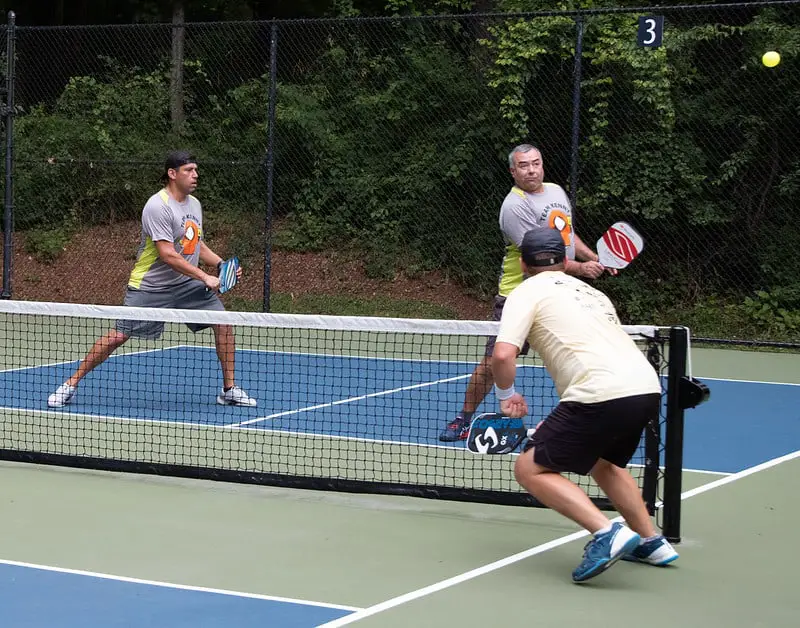
If you have some experience playing this game, you might know if you want a paddle with an edge guard or not. Similarly, wanting a paddle for power or control is also a subjective choice.
However, we are sharing some advantages and disadvantages of both choices to help beginners decide.
Edge Guard or Edgeless
As the name implies, Edge guard guards the paddle and keeps it safe from scratches or hard surfaces. It is usually made of plastic, rubber, or other materials and wrapped around the face of a paddle.
Edge Guard protects all three layers of the paddle safe. Therefore, if you dive deep to shoot the ball and hit the hard ground, your paddle will still be safe.
For some people, an edge guard reduces their mobility and sharpness in the game as it adds more weight to the paddle. They also increase the chances of mishits.
On the other hand, it is not the case for many players, and extra weight allows them to have more power hits.
There are a few edgeless paddles in the market also. They have a thin tape around them, which allows the players more surface area to hit the ball. There are also fewer miss-hits with the edgeless paddle.
However, it may not provide sufficient protection from the strong hits and rough court surface. As a result, edges may start to chop off, especially for outdoor players.
In our opinion, an edge guard is a good way of protecting the paddle and allows you to use it for longevity. However, you can pick what you think is better for you.
Power or Touch/Control
There are some players who prefer using full force to hit the ball. While other players prefer control and hit the pickleball precisely and strategically. Power and touch come from the core and surface materials used in the paddles and the paddle’s weight.
The heavy paddles, when combined with force, cause acceleration. It adds power to the ball for strong hits. The heavier the paddle, the more power it will provide. If you can handle the weight, have no medical issues, and like to play aggressively, you can choose power paddles.
The touch/control paddle gives you time to control the ball and hit at his desired target. For more precise, accurate hits and fast maneuverability, you can choose control paddles.
With modern and new developments in the pickleball industry, you can get paddles with a good blend of touch and power.
Noise
Pickleball is a noisy game. When the paddle connects with the pickleball ball, it makes a loud popping sound that many communities and societies do not appreciate.
That is why manufacturers use materials that absorb the sound and shock and reduce noise. These are called ‘green zone’ approved pickle paddles. These paddles are approved by Sun City Grand Association and have passed the test of noise level guidance.
Therefore, when shopping for pickleball paddles, always see the specification if the paddle has noise control properties and is green-zone approved, especially if you are playing in noise-restricted communities.
However, it should not be the only criterion for choosing or buying a paddle. Other features like grip size, material, and weight of the paddle should be considered first.
Player Experience
Different people are searching for their ideal paddle. They are either beginners, experienced, or transitional players coming from other games.
Pickleball Experience
If you’ve experience of playing pickleball, you would already be aware of your playing style, preferred paddle type, and other preferences. So you should keep those in mind whenever choosing a paddle.
However, there are a lot of game improvement paddles available in the market. So if you’re an intermediate player and want to improve your game, you can check out our list of the best pickleball paddles for intermediate players.
Experience of Tennis or Other Racquet Sports
If you are coming from tennis to pickleball game, you may want to use heavy paddles, as you are used to holding racquets that are mostly heavier than paddles. So you can choose paddles that weigh more than 8.4 oz and above. Also, consider the long handles as you are more familiar with them.
For Beginners
As a beginner who hasn’t played any racquet sport, you should go for mid-weight paddles. It has a bigger sweet spot than lightweight paddles, and they are less tiring than heavy paddles.
After playing for some time, you will understand your style and paddles better and can choose accordingly.
Design and Color
There are some specific instructions when it comes to the pickleball paddle’s design. According to rules, paddles should not exceed 24 inches, including length, width, edge guard, and butt cap. Therefore, manufacturers are experimenting with this number and are creating new styles and shapes.
In some paddles, you will see a thin edge guard, and others have thick. Shapes and designs also have many variations. You can choose according to your liking.
However, you can choose any color or design in a paddle as per your aesthetic appeal. You can get a simple paddle or vibrant paddle, or choose any funky design and doodle on the paddle face. It’s all up to your personal preference.
But it’s pertinent to mention here that, according to the USAPA rule book, your paddle shouldn’t reflect light as it can affect your opponent’s vision.
Price
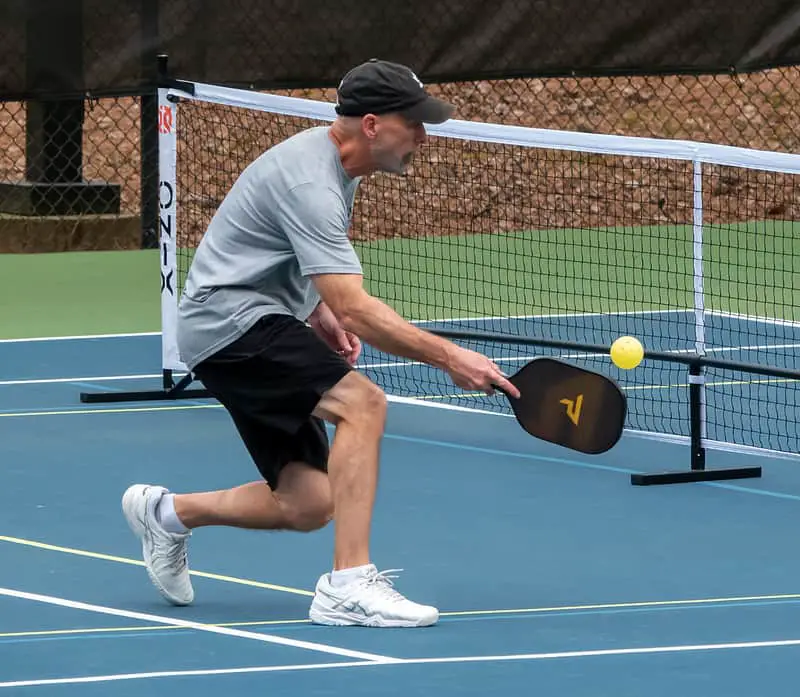
Pickleball paddles have a significant price variation. You can find a cheap paddle under $20 and expensive ones that cost $200 or more. If you’re wondering why are is there such a huge variation in prices, you can check out our post on why pickleball paddles are so expensive.
You can choose a paddle depending on what material, size, and quality you want. Or, it can be according to your level of the game.
An entry-level player may not need the features a high-quality, expensive paddle offers. Therefore, paddles that cost $50 or less can be helpful and appropriate.
On the other hand, a professional player invests a good amount of money in getting better paddles. However, for those who want something neither too cheap nor too expensive, check out the list of the 8 top pickleball paddles under $75.
Regular vs occasional players also have different requirements. Considering the advantage high-quality paddles provide on the court, we would never advise you to skimp out on paddles as a low-quality paddle can cost you a game.
So go for an affordable paddle and pay attention to the material quality and other prominent factors to get a perfect paddle for yourself. Once you start understanding the game, you can invest in a better, more pricey paddle.
USAPA Approval
When choosing a paddle, there is another pivotal point to consider. Is your pickleball paddle USAPA approved? What is USAPA, and for whom it should matter?
USA Pickleball Association is the governing body of pickleball in the USA. Understandably, they are in control of approving pickleball paddles. If you have plans to play in the USAPA-sanctioned tournament, you need a paddle approved by USAPA.
There is a particular criterion that needs to be followed.
- Materials: It should be rigid, nothing with springs, rubber, or sandpaper characteristics.
- Size: It should be 17 inches long at most, but the handle and face can have variations.
- Weight: There is no restriction for the weight or thickness of the paddle.
- Surface: It can’t have holes or material that adds more spin to the ball. Paddles can’t have a reflective surface that can disturb the opponent with the reflection of light.
- Alterations: You can only change the handle grip or use lead tape in the edge guard. Homemade paddles are also not allowed in the tournaments.
USAPA has made it compulsory from 2017 to have a USAPA seal or “Approved” on the paddles. However, their website keeps updating the list of approved paddles that you can check before buying a paddle.
Like any other game, the pickleball paddle has its own rules and tools to play with. Many recreational players don’t bother to see if the paddle is USAPA approved or not.
However, if you want to play as a professional, adhere to the USAPA approved paddles. Practicing with the standard paddle will improve your game and enhance your competitive spirit.
FAQs
How long does a pickleball paddle last?
A pickleball paddle lasts between 1-4 years, depending on several factors. Pro players, regular players, and bangers frequently replace their paddles, as they wear out quickly. But if you play occasionally and take proper care of your paddle, it can easily last for 2-3 years.
The exact answer to how long your paddle will last solely depend upon these factors.
- Are you protecting it from harsh weather?
- Are you storing it properly after cleaning the sweat and dust?
- Does your pickleball paddle have an edge guard to keep it safe?
- Is your paddle made of high-quality materials, like graphite and polymer?
If the answer to the above questions is yes, then you can keep your favorite paddle for a long time. You can read more about wearing out of pickleball paddles here.
Why do paddles have an overlapping edge guard?
The overlapping edge guard is there to protect your paddle. Dropping the paddle or smacking it against a hard surface are common mistakes. However, an edge guard will protect the paddle and increase its durability and longevity.
What is a sweet spot?
You can hit with maximum power when the ball makes contact with your paddle on the sweet spot. The sweet spot is mostly the center of the paddle, which gives you the best shot. You learn to hit the ball in the sweet spot after some practice.
Where can you buy pickleball paddles?
With the increasing popularity of pickleball, sports paddles are not hard to find. You can buy pickleball paddles from any major sports shop, tennis racket Walmart where they have paddles, and even online.
What are indoor and outdoor paddles?
There is no such specification for pickleball paddles. They can be used indoor or outdoor without any worry. You have to take care of them in the same way. However, if you are playing in a humid and sweaty atmosphere, make sure to dry your paddle before storing it.
However, there are different pickleball balls for indoor and outdoor games.
Is there any difference between men’s and women’s paddles?
There are not any special paddles for women and men. All the paddles are unisex. The only difference can be the grip size or weight of the paddle, which women can buy if they want a small grip and lightweight paddle.
If you are searching for comfortable paddles for women, you can check our list of the best pickleball paddles for women.
The Bottom Line
These are all the factors that can help you determine which paddle is the best option for you. It would help if you never compromise on the quality, weight, and grip size of the paddle. If these three things are perfect, you will become a proficient player in no time.
However, buying a paddle within your budget is also important. Always remember that not all expensive paddles are best. What suits you is the best paddle for you. Inexpensive paddles can also have great features.
You can choose the design, shape, size, and color of the paddle according to your preference and expertise. If you have plans to play in tournaments, remember to check if the paddle is USAPA approved.
A great way to try out paddles before buying is to opt for a pickleball paddle demo program. Many retailers and manufacturers offer such programs for a little fee.
The most important thing is having fun. Go out and have fun with your family and friends. However, if all this detail is overwhelming and confusing, check out the list of the best pickleball paddles.

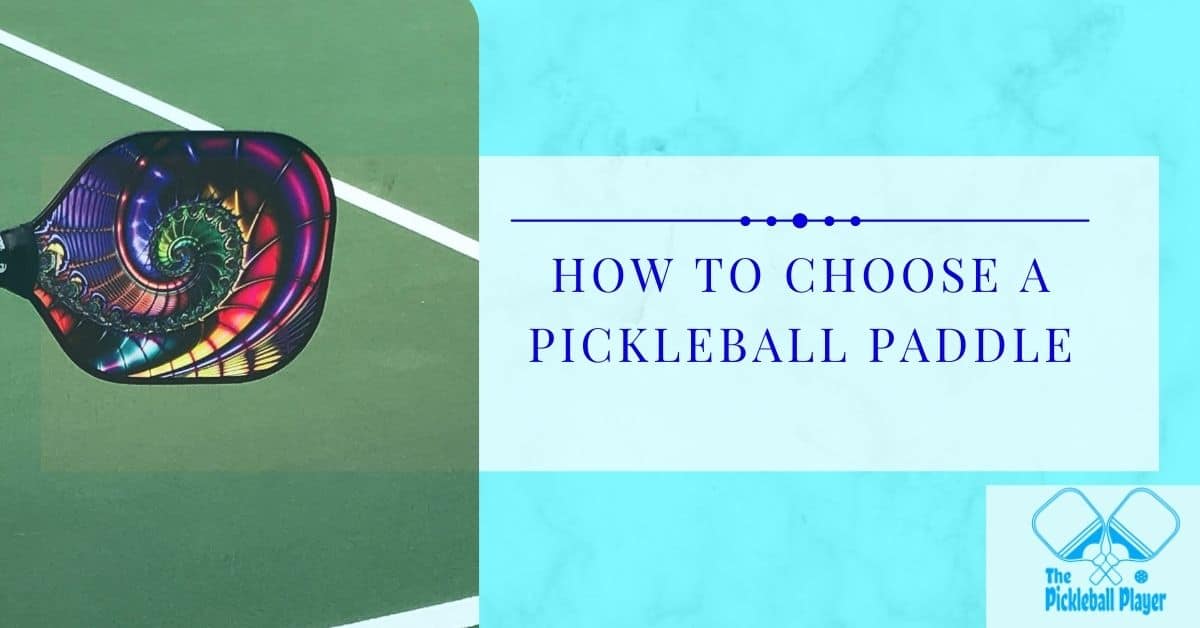

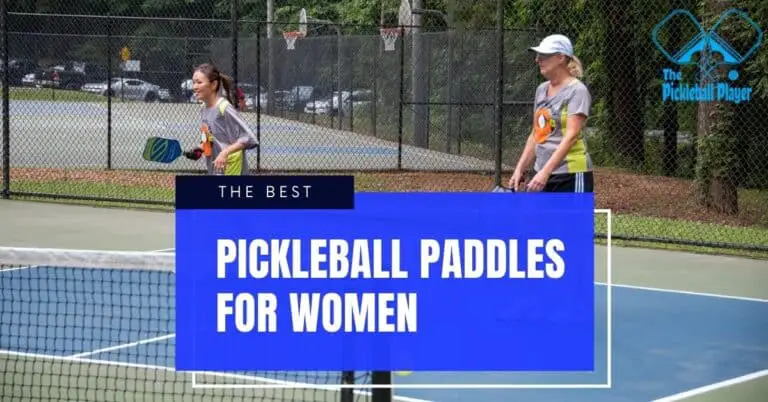
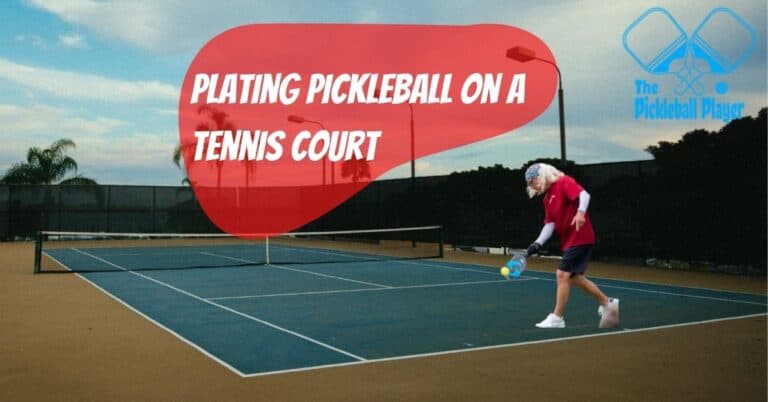
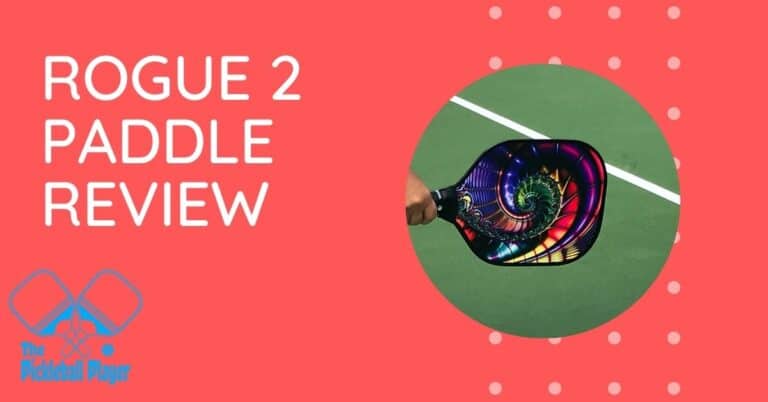
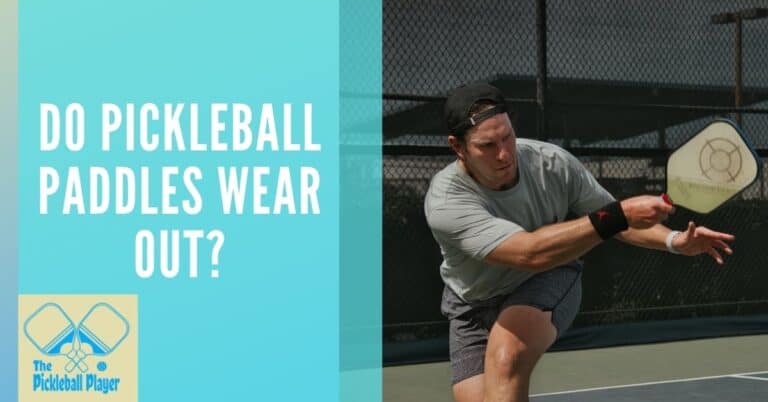
![Is Pickleball Good For Seniors? [Yes, Here’s Why!]](https://thepickleballplayer.com/wp-content/uploads/2023/02/is-pickleball-good-for-seniors-768x432.png)